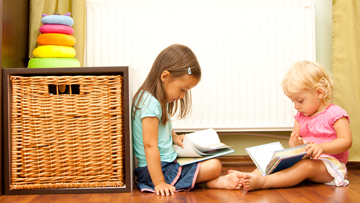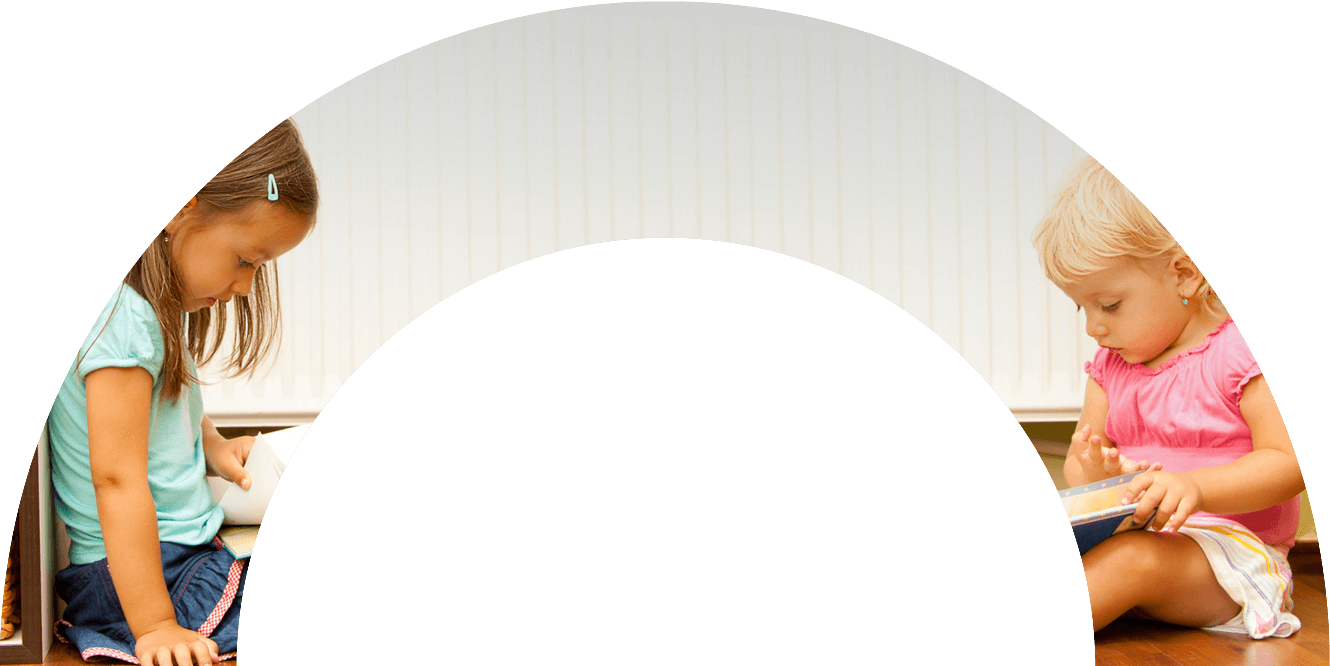Considering the importance of school in a child’s development, the appearance of a learning disability is particularly significant. This topic provides an overview of the most common disabilities, their origins, potential impacts on children’s behaviour and development, how to recognize them, and prevention and intervention strategies.
Synthesis PDF Complete topic PDFInformation sheets
Download the free PDF version here or purchase hardcopy prints from our online store.
Learning disabilities
Preventing reading difficulties: it spells success!

Learning disabilities
Preventing math learning difficulties: it adds up to success

Synthesis
How important is it?
Learning disabilities are problems that affect the child’s ability to receive, process, analyze or store information. They can make it difficult for this child to read, write, spell or solve math problems.
Dyscalculia, or mathematical disability, refers to a persistent difficulty in learning or understanding number concepts, counting principles or arithmetic. These difficulties are often called a mathematical disability. Between 3% and 8% of school-aged children show persistent grade-to-grade difficulties in learning such mathematical concepts.About half of children with dyscalculia are also delayed in learning to read or have a reading disability, and many have attention deficit disorder (ADD).
Dyslexia, or reading disability, refers to an unexpected difficulty in reading, “unexpected” meaning that all the factors necessary for reading appear to be present (intelligence, motivation and at least adequate reading instruction), yet the child is still struggling to read. Reading difficulties are not only highly prevalent (estimates range from 25% to 40%); they are also persistent. Roughly 75% of children who struggle to read in third grade will continue to struggle throughout school.
Failure in reading is highly correlated with overall school failure and subsequent behaviour, social and emotional problems, with reading considered a protective factor that helps to counter social and/or economic disadvantage. Mathematics competence accounts for variance in employment, income and work productivity. Learning disabilities are therefore a serious public-health problem, leading to life-long difficulties in learning skills both in school and in the workplace, and creating financial burdens on society.
What do we know?
Dyscalculia
Many studies indicate that dyscalculia is not related to intelligence, motivation or other factors that might influence learning. Most of the children affected have specific deficits in one or more areas, but often perform at grade level or better in other areas.
The early signs of dyscalculia include a poor understanding of number magnitude, a rigid understanding of counting, and use of immature strategies during problem-solving. In first grade, children with dyscalculia often do not know basic number names (e.g. “9” = “nine”), and have difficulty identifying which number is larger or smaller.
Almost all children – including those with dyscalculia – are able to learn the basic counting sequence (“one, two, three, four…”). However, some children have difficulty with the rules that underlie the ability to count effectively. These include one-one correspondence (one and only one word tag, e.g. “one,” “two,” is assigned to each object), stable order (the order of the word tag is the same across counted sets), and cardinality (the value of the final word tag represents the quantity of items in the set).
Many children with dyscalculia have trouble remembering basic arithmetic facts, such as the answer to 5+3.Many of these children use immature problem-solving strategies, such as relying on finger counting for more years than other children, and they make more mistakes when counting.
Anxiety about mathematics can lead to errors. Dyscalculia is very likely to eventually result in frustration and avoidance, and potentially excess anxiety that, in addition to the underlying cognitive deficit, will almost certainly make it more difficult to learn mathematics.
Dyslexia
The key discovery related to dyslexia is that reading is not natural, but is acquired and must be taught. To read, a child must learn how to connect the abstract lines and circles (i.e. letters) on a page to the sound of spoken language.
Recent evidence suggests both genetic and environmental influences in the development of dyslexia. A child with an affected parent is 80 times more likely to be dyslexic. Boys and girls who come from disadvantaged backgrounds are especially at risk for developing reading difficulties, because they tend to have less exposure to language and often lack the vocabulary skills or background knowledge necessary to develop strong reading comprehension skills.
Although multiple developmental paths lead to dyslexia, children in need of preventive training can be identified early by using two sources of information: the family background in relation to reading, and the development of skills that can predict reading acquisition (e.g. letter knowledge).
Learning disabilities, if left untreated, compromise knowledge acquisition, expose a child to repeated experiences of failure and may reduce motivation for learning in general. For dyslexia as well as dyscalculia, providing early help may avoid many of the associated problems that affect self-esteem and emotional well-being.
What can be done?
Dyscalculia
In the primary grades, number combinations and word problems are two key concepts for establishing a strong foundation. Number combinations are one-digit addition and subtraction problems (e.g. 3+2=5). As the learner becomes proficient in counting strategies, these pairs and associations move to long-term memory. Word problems are linguistically presented questions that require sorting through information and adding or subtracting one- or two-digit numerals.
To improve number combination skills, there are two intervention approaches: conceptual instruction, where the teacher structures experiences to foster interconnected knowledge about quantities and guides students to correct understandings; and drill and practice, where repeated pairings of problem stems with correct answers serve to establish representations in long-term memory. The latest research reports that a combination of these approaches results in better outcomes.
To enhance word problem skills, two additional approaches exist: metacognitive instruction, in which teachers help students apply planning and organizational strategies, and schema-based instruction, in which students first master rules for solving problem types and then develop schemas to group problems into types that require similar solution strategies.
There is still much to be done in terms of basic research, assessment and remediation of mathematical disabilities. A standardized diagnostic test is needed to obtain more precise information on such aspects as counting knowledge and mathematical problem-solving procedures for elementary school children with dyscalculia. Measures are also needed to identify preschoolers at risk. As well, more research is required on basic counting and arithmetic skills in preschool children as they relate to later risk of dyscalculia, the genetics of dyscalculia and the neurological systems that might be involved, and the co-occurrence of reading and math problems.
Finally, the anxiety and avoidance of mathematics that are likely to result from the cognitive deficits must be addressed. Without attention to the frustration and anxiety, a risk for exacerbated and long-term problems in math exists.
Dyslexia
Brain imaging studies have revealed differences in brain activation patterns between good and poor readers. When poor readers were taught with evidence-based methods, however, their neural systems reorganized to resemble the brain activation patterns of those observed in children who were good readers. This demonstrates that teaching really matters.
In 2000, the National Reading Panel appointed by the U.S. Congress reported that to learn to read, children must be taught five elements of reading: phonemic awareness, phonics, fluency, vocabulary and reading comprehension. Phonemic awareness is the ability to notice and identify the individual sounds of spoken words (e.g. “mat” has three phenomes: “mmm”-“aaa”-“t”). Phonics is the ability to link letters to individual sounds. The knowledge that these two components are key to developing a foundation for reading means that such skills and awareness can be taught to young children, even before they are expected to read.
Simple rhyming games help children as young as three years old begin to appreciate that spoken words come apart. For example, to know that “mat,” “hat” and “cat” rhyme, a child must be able to focus on only a part of the word (the rhyme “at”). Gradually, children learn to pull words apart, push them together and move the parts around. Simple activities such as clapping to the number of sounds (syllables) in a spoken word help children learn how to pull apart words.
Training and strengthening the core reading processes is the most likely way to boost reading skills. Any activity that helps to develop language skills is to be welcomed, but from age five, there should be more systematic practice of at least five to 20 minutes per day, realized in the context of play. The most appropriate preventive procedure is to use a consistency principle that favours the most dominant and frequent letter-sound connections.
Children who are at risk should be identified and helped as early as possible. Language development should be assessed beginning at age two – especially for children from families with a background of dyslexia. If no delay is observed, the next stage of identification of potential risk is at age four, when spontaneous acquisition of letter knowledge provides good evidence of the possible need for preventive practice.
Ultimately, young children’s literacy development involves a dynamic thinking and linguistic process, incorporating problem-solving, discussion, reflection and decision-making. Effective interventions for children who may be at risk of developing learning disabilities should therefore focus on multidimensional learning.
Resolving questions about optimum approaches in the teaching of literacy and mathematics for children at risk is more than an academic question, but has ramifications at the national and international levels. Providing young children with these basic skills enhances their academic, emotional and social well-being, with lifelong implications.
Discover more

How to help young children become good readers?
Children begin to read in their first primary school years – but the foundations for reading are laid in the early years.
Even very young, children learn to notice and manipulate the sounds of language and learn to recognize and name letters. They can also begin to learn to problem solve, discuss, reflect and make decisions – all part of the process of learning to read.
Simple rhyming games, singing songs, reading aloud and playing with letters are basic activities that set the stage for learning to read. Fun and age-appropriate games (including quality computer games) can also boost children’s skills in problem solving and language learning process.
With this solid foundation in place, children can go on to later develop fluency, vocabulary and reading comprehension – other important reading skills.
Publications
Dyslexia at an Early Age and Its Impact on Early Socio-Emotional Development
Early Identification and Prevention of Reading Problems
Early Prevention of Learning Disabilities: Comments on Lyytinen and Erskine, and Fuchs




